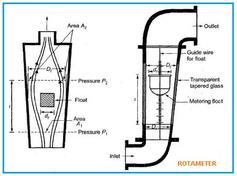Advantages and Disadvantages of Digital Flow Meters
Advertisement
This article explores the pros and cons of digital flow meters, outlining their benefits and drawbacks compared to traditional mechanical counterparts.
What is a Digital Flow Meter?
A digital flow meter is a device that measures the flow rate of liquids or gases and displays the results numerically on a digital screen. Unlike mechanical flow meters, which might use a needle or other analog indicator, digital flow meters translate flow data into easy-to-read numbers.

Figure 1: Examples of digital flow meters from OMEGA and ASTER.
These meters capture flow information and present it in a clear, digital format. This contrasts with mechanical meters, which rely on physical movement to indicate flow.
Benefits of Digital Flow Meters
Here are some of the key advantages of using digital flow meters:
- Increased Reliability: Digital flow meters are generally more reliable than traditional mechanical meters like rotameters. They often have fewer moving parts, reducing wear and tear.
- Easy to Read: The numerical display makes it much easier to read the flow rate accurately, minimizing the chance of human error in interpreting measurements.
- Improved Accuracy: Digital flow meters typically offer higher accuracy compared to their mechanical counterparts, providing more precise readings.
- Reduced Sensitivity to Fluid Conditions: These meters are less dependent on the pressure and temperature of the fluid being measured due to their use of external power for operation. This ensures more stable readings even with changing fluid conditions.
Drawbacks of Digital Flow Meters
Despite their advantages, digital flow meters have some disadvantages:
- External Power Requirement: Digital flow meters require an external power source to operate. This leads to increased power consumption and, consequently, higher electricity bills.
- Higher Cost: Digital flow meters are typically more expensive compared to traditional mechanical flow meter types. The advanced technology involved often translates to a higher initial investment.
- Power Dependency: Since these meters rely on external power, they must be plugged in to operate. This can limit their portability and usefulness in situations where power access is restricted.
In conclusion, while digital flow meters offer significant advantages in terms of accuracy, reliability, and ease of reading, their higher cost and dependence on external power should be considered when choosing the right flow measurement solution for a particular application.
Advertisement
 T&M
T&M 



